Breaking News — Tucker Carlson Finally Speaks Out and Reveals the Network Behind the Effort to Silence Charlie Kirk — The Hidden File He Referenced Might Change Everything.
Breaking News — Tucker Carlson Finally Speaks Out and Reveals the Network Behind the Effort to Silence Charlie Kirk — The Hidden File He Referenced Might Change Everything.
When Tucker Carlson appeared on camera this week, his tone was different.
No monologue. No jokes. Just a quiet, deliberate voice that made millions lean closer to their screens.
He didn’t raise his voice, but every sentence carried weight — the kind that comes only when someone has decided to finally speak, no matter the cost.
And at the center of it all: a name that needs no introduction — Charlie Kirk.
For months, whispers had circulated online. Some said Kirk had been “pressured” behind the scenes. Others claimed a coordinated network had slowly moved to sideline him, one decision at a time. But until Tucker’s recent broadcast, everything remained rumor — background noise on the edge of the public conversation.
Now, that noise has turned into something else entirely.

The Moment That Changed Everything
Tucker began with a line that caught everyone’s attention:
“There are things happening behind the curtain — and the public deserves to know who’s pulling the strings.”
He paused. Looked straight into the camera.
Then came the words that have since rippled across every corner of the internet:
“There was a coordinated effort to discredit Charlie Kirk — and it went far deeper than anyone realized.”
The internet exploded. Within minutes, hashtags spread across X (formerly Twitter), Reddit threads multiplied, and commentators rushed to decode every phrase.
But Tucker wasn’t done.
He leaned forward, lowered his tone, and said something that made even his producers pause:
“There’s a file. And what’s inside that file might change everything you think you know about how narratives are shaped — and who controls them.”
No one expected that line. Not the audience. Not even those close to him.
And that’s when the real story began.
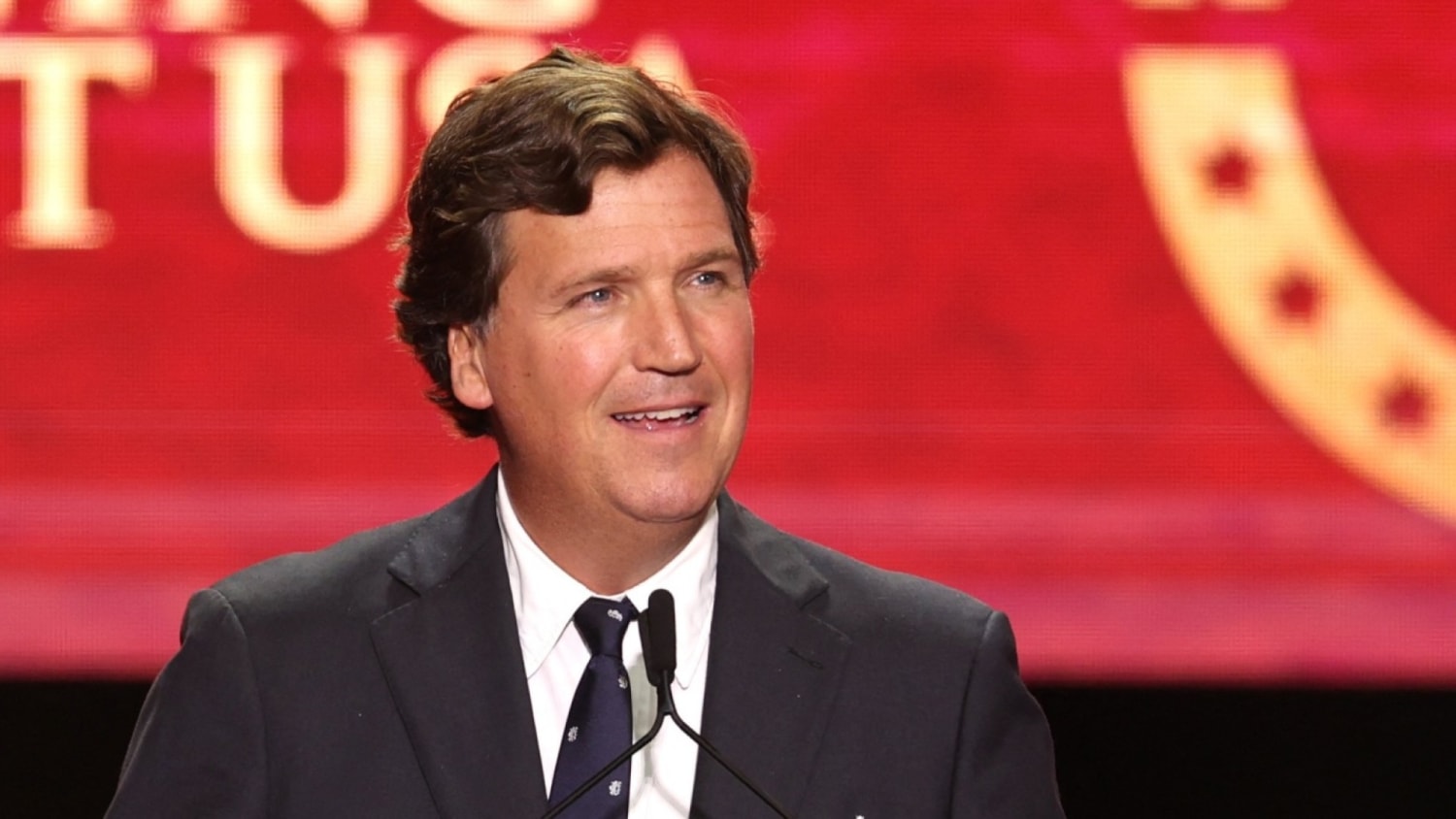
The Quiet Build-Up
Sources familiar with the situation describe a slow, methodical process — one that began long before any public fallout.
Charlie Kirk, known for his energetic presence and unfiltered takes, had built a massive audience over the years. But in recent months, something felt off. Subtle scheduling changes. Guest cancellations. Shifts in tone from people who once openly supported him.
“None of it was obvious at first,” said one former producer who requested anonymity. “It wasn’t like someone flipped a switch. It was more like a dimmer — one that got lower and lower, until you realized the room had gone dark.”
That’s what made Tucker’s revelation so stunning.
If there really was a “coordinated effort,” then who orchestrated it? And why?
Inside the File
When Tucker mentioned the mysterious file, viewers assumed it was a metaphor — a way to describe hidden information or internal documents. But according to several reports, it might be very real.
A source close to the situation told independent journalist Ryan Matthews that a confidential collection of correspondence, emails, and meeting summaries had quietly circulated within certain media and political circles.
The source didn’t claim to have seen it directly — but said enough to raise eyebrows:
“People are nervous about it because it doesn’t just involve Charlie or Tucker. It connects dots between names you wouldn’t expect to see in the same room.”
Whether the file exists or not remains unconfirmed. But the rumor itself has been enough to ignite public curiosity — and fear.
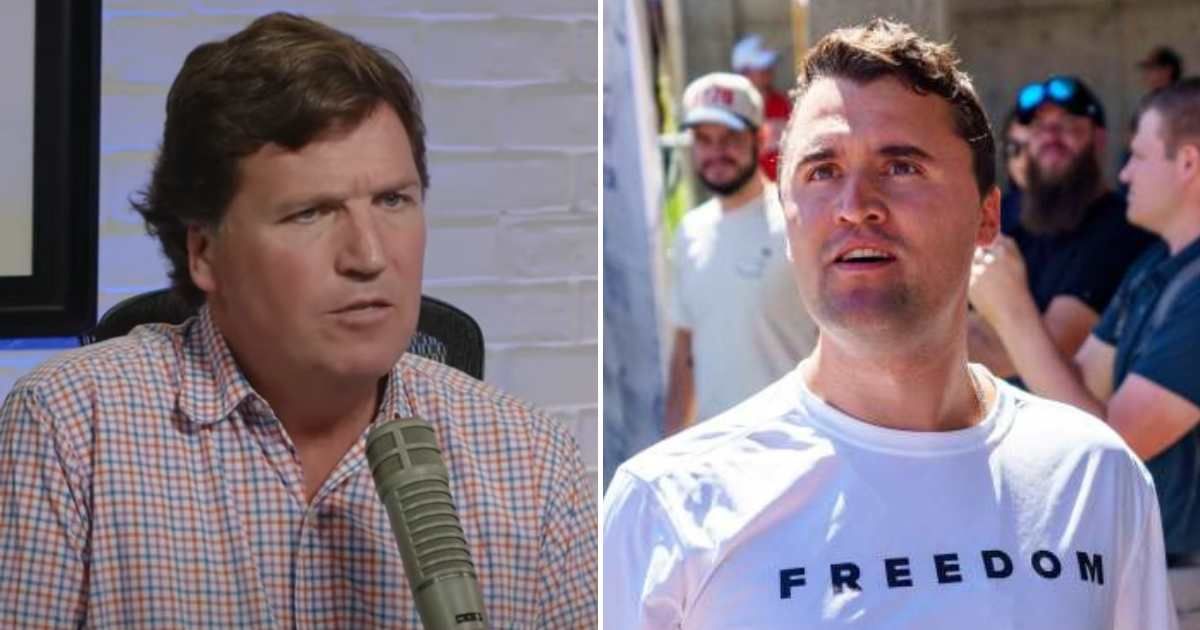
Tucker’s Calculated Silence
For months, Tucker had remained quiet about the issue. Many assumed he had moved on after parting ways with major television networks.
But those close to him say he’d been watching carefully — documenting what he saw, waiting for the right moment to speak.
“He’s not impulsive,” said a longtime associate. “He doesn’t say things just to trend. When he talks like that, it means he’s sitting on something bigger.”
That idea — that Tucker had waited for a reason — only deepened speculation about what’s coming next.

The Reaction
Within hours of the broadcast, major outlets began reacting.
Some dismissed his claims as vague or exaggerated. Others accused him of “stirring the pot.”
But what stood out wasn’t the criticism — it was the silence.
Several figures who had once been quick to fact-check Tucker or challenge his comments on air stayed quiet this time. No responses. No clarifications. Just a pause — the kind that says more than any statement could.
Across social media, users noticed too.
“It’s not what they said,” wrote one user on X. “It’s what they didn’t say. Nobody wants to touch this story.”
Charlie Kirk’s Response
Meanwhile, Charlie Kirk himself stayed composed.
During a live broadcast the next day, he thanked Tucker for “having the courage to speak,” but avoided confirming or denying any of the details.
“I’ve learned something in this business,” Kirk said. “Sometimes the truth doesn’t come out all at once. Sometimes it comes in waves. You just have to be ready for it.”
Viewers noticed the subtle tone — not defensive, not surprised. Almost as if he already knew what was coming.
The Media Storm
By the end of the week, major digital outlets were covering the story, each adding their own spin.
Some focused on the possible “network rivalry.” Others analyzed the psychology of influence and control within modern media.
But what stood out was the language used across platforms: coordinated, systematic, strategic.
No one wanted to name names, but everyone knew the implications.
Could it really be possible that a quiet, deliberate network — not of individuals, but of influence — had worked behind the scenes to reshape narratives around key public figures?
The Timeline Nobody Noticed
When researchers and journalists began connecting timestamps, a pattern started to emerge.
Just days before Kirk’s sudden drop from certain public appearances, multiple unrelated accounts — journalists, analysts, and even former allies — began echoing the same talking points about “credibility,” “tone,” and “professionalism.”
Coincidence? Maybe. But it was enough to make independent analysts start asking deeper questions.
“When you see identical narratives appear across different outlets within 72 hours,” one observer noted, “that’s not organic. That’s coordination.”
Still, without evidence, it remained speculation — though the timing continues to fuel conversation.
What’s Really at Stake
Beyond the drama of personalities and politics lies a deeper question:
How much control do individuals really have over their own platforms once they reach a certain level of influence?
That’s the uncomfortable question Tucker’s revelation seems to raise.
If networks — whether corporate, digital, or ideological — can quietly shape who gets amplified and who gets muted, what does that mean for the idea of open discourse?
And if one “mysterious file” can shake the system, what else might still be hidden from view?
The Public’s Divided Reaction
Online, reactions have been split.
Supporters see Tucker’s comments as proof that something long suspected is finally surfacing.
Critics dismiss it as a publicity tactic.
Yet even among skeptics, there’s a common thread — curiosity. Everyone wants to know what’s inside that file.
TikTok clips analyzing Tucker’s tone. Reddit posts dissecting his wording. YouTube creators re-editing the original broadcast, frame by frame, looking for clues.
One viral post summed it up perfectly:
“We’re not sure if it’s real — but the way everyone’s avoiding it makes it feel real.”
What the Experts Are Saying
Media analysts and communication experts have weighed in too, focusing on the broader implications.
Dr. Elise Warren, a professor of media studies, told The Atlantic Observer:
“Regardless of the factual content of the file, this story exposes a growing crisis of trust. People no longer believe narratives are shaped organically — they assume coordination. That perception alone changes everything.”
In other words, even if the file never surfaces, the idea of it might already be rewriting public perception.
Tucker’s Next Move
Behind the scenes, sources close to Tucker say he’s preparing a longer follow-up — possibly an investigative documentary or interview series exploring the influence of unseen networks on media credibility.
If true, it could become one of his most ambitious projects yet.
And if the “file” turns out to be real — and verified — it could shift the conversation around how stories are created, shared, and controlled.
The Silence Before the Storm
For now, the air is thick with anticipation.
Charlie Kirk continues broadcasting, Tucker continues hinting at more to come, and insiders across the media world are reportedly “on edge.”
It’s not about one man or one show anymore. It’s about the structure — the invisible scaffolding that holds up modern information.
And that’s why this story matters.
Because no matter what’s inside the file — whether it’s a symbol or a set of documents — it’s a reminder that truth often lives in places no one is supposed to look.
What Happens Next
If history is any guide, this story won’t fade quietly.
Every revelation creates ripples — and those ripples turn into waves.
Whether Tucker’s next broadcast confirms new details or keeps the mystery alive, one thing is certain: the questions he’s raised won’t disappear.
As one online commenter put it:
“Even if the file never sees daylight, the fact that people are scared of it says enough.”
Final Thoughts — The Power of One Voice
In the end, maybe that’s what this moment is really about.
Not about files, networks, or secret meetings — but about one person deciding to speak when it’s easier to stay silent.
Because truth, in its rawest form, doesn’t always arrive with proof attached. Sometimes it begins as a whisper, a question, or a pause that makes everyone look twice.
And whether Tucker Carlson’s revelation leads to the exposure of hidden systems or simply sparks a deeper public conversation, it has already done one thing powerfully:
It reminded the world that even in an age of controlled narratives, one voice can still make millions stop — and listen.
EXCLUSIVE: Candace Owens Uncovers Shocking Cover-Up Surrounding Charlie Kirk’s D:e:a:t:h — Experts Tried to Keep You in the Dark! — The Hidden Truth You Won’t Believe

EXCLUSIVE: Candace Owens Uncovers Shocking Cover-Up Surrounding Charlie Kirk’s D:e:a:t:h — Experts Tried to Keep You in the Dark! — The Hidden Truth You Won’t Believe
The Shocking Revelation
Candace Owens has just dropped what many are calling one of the most explosive revelations of the year. In a series of statements that have reverberated across social media platforms, Owens claimed that key experts may have deliberately withheld or twisted critical information surrounding the death of Charlie Kirk. According to Owens, the public has only seen a fraction of the truth, leaving millions of people with questions and suspicions that continue to grow by the hour.
The moment Owens released her statements, online communities erupted. Fans and critics alike were quick to dissect every word, seeking clues, hidden meanings, and inconsistencies in the official narratives. Social media feeds were flooded with hashtags referencing Kirk, Owens, and the so-called cover-up. Many users began compiling timelines, comparing official reports with Owens’ claims, and speculating about the possible motivations behind this alleged concealment.
Owens described a series of events that suggest a complex web of misdirection and obfuscation. According to her, certain evidence was overlooked, key analyses were misleading, and experts seemed to prioritize maintaining a narrative over revealing the facts. This, she argues, has created a distorted picture of the situation that could mislead the public indefinitely if left unchecked.
The implications are enormous. If Owens’ claims are accurate, it could mean that mainstream narratives surrounding Charlie Kirk’s death have been carefully curated, possibly to protect specific individuals or institutions. The gravity of the allegations has made social media a hive of speculation, with viewers, bloggers, and news commentators debating every conceivable scenario.
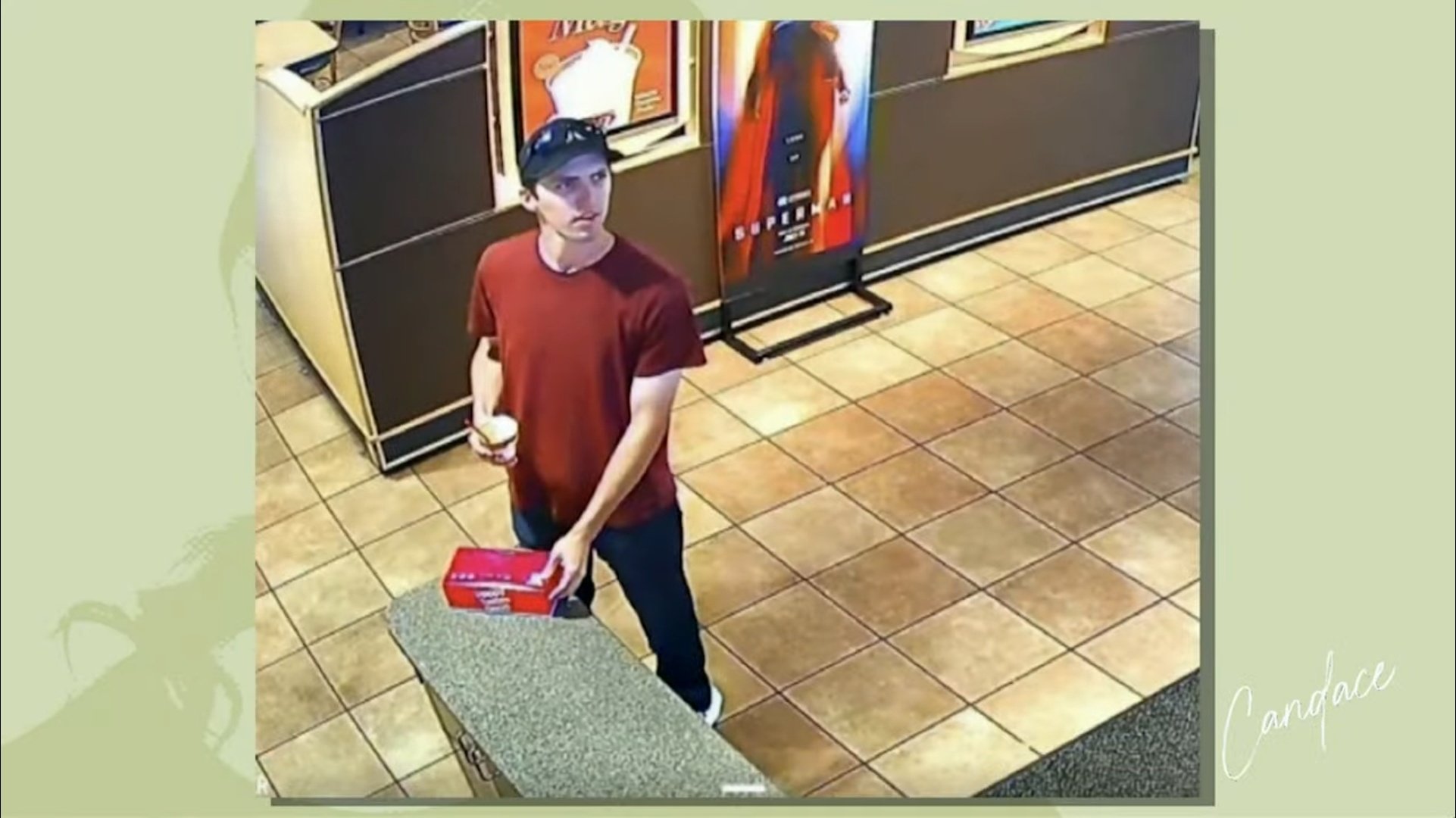
Hidden Twists and Overlooked Details
According to Owens, the story of Charlie Kirk’s death is far more complicated than initially reported. She points to a series of overlooked details and hidden twists that were either ignored or minimized by the experts handling the case. For instance, she mentions discrepancies in timelines, contradictory witness statements, and unusual procedural choices that raise questions about the integrity of the investigation.
Owens insists that these details are not minor oversights but pivotal pieces of a larger puzzle. The online community has responded by scrutinizing every publicly available document, interview, and report, attempting to reconcile the official narrative with Owens’ claims. Forums and discussion threads have exploded with debates, with users pointing out inconsistencies and theorizing about what might have been deliberately concealed.
One of the most discussed points revolves around timing and location. Owens claims there were crucial moments and interactions that were downplayed or ignored entirely. These small but significant omissions, she argues, could dramatically alter the perception of what happened. Fans and investigators alike have started re-examining public records, trying to piece together a clearer picture, and asking: why were these details not emphasized in the official reports?
Furthermore, Owens highlights the role of experts who, whether intentionally or inadvertently, may have shaped the narrative in ways that obscured certain facts. She does not name specific individuals but emphasizes patterns of behavior that suggest a larger agenda at play. This has fueled speculation about who might benefit from the public being kept in the dark.
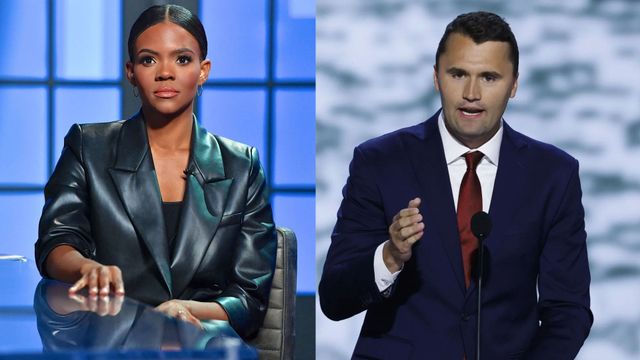
Public Reaction and Social Media Frenzy
The public reaction to Owens’ revelations has been immediate and intense. Across Twitter, Instagram, TikTok, and YouTube, users have shared her statements, dissected every claim, and debated the implications. Some express shock and disbelief, while others speculate about possible conspiracies and hidden motives. The sheer volume of commentary has created trending topics and viral discussions worldwide.
Fan theories range from the mundane to the extraordinary. Some argue that the alleged concealment was intended to protect reputations, while others believe it points to systemic failures within investigative institutions. Debate is fierce, with online communities splitting between skeptics and believers, each side presenting “evidence” to support their position.
Owens herself has actively engaged with social media audiences, responding to questions and clarifying points in interviews and live streams. Her approach has only intensified the conversation, making it impossible for mainstream media to ignore. Traditional news outlets have reported on the story, often framing it as an explosive claim with potentially wide-reaching implications, adding fuel to the public’s curiosity and concern.
This frenzy is compounded by the fact that very few people have had access to the full picture. With Owens’ revelations as a new focal point, people are combing through every available document, video, and witness account, trying to reconcile what they thought they knew with the new narrative she presents. Every overlooked detail, every hidden connection, and every timeline discrepancy is now being scrutinized for significance.

The Larger Implications
Beyond the immediate controversy, Owens’ revelations raise broader questions about transparency, accountability, and public trust. If experts did manipulate or withhold information, it challenges the integrity of the institutions involved and highlights the need for independent scrutiny. The case has become a touchstone for debates about how information is controlled and the consequences of obfuscation on public perception.
Owens argues that uncovering the truth is not just about revisiting one case but about ensuring that such manipulation does not recur. She urges the public to demand clarity, transparency, and accountability, emphasizing that every citizen has a stake in how information is presented and interpreted.
The story continues to unfold, with new developments emerging daily. Social media is now a central battleground for information, with millions following updates, speculating on new evidence, and analyzing the potential motives of those involved. The impact of Owens’ revelations is ongoing, as journalists, legal experts, and fans alike seek to understand the full scope of what she claims to have uncovered.
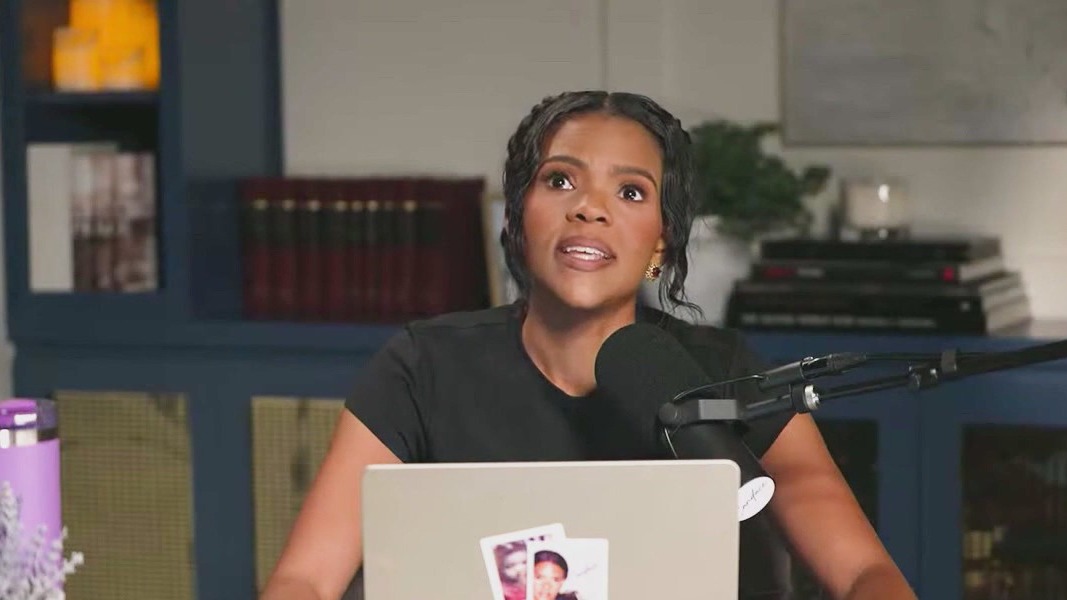
For viewers and readers, the stakes could not be higher. The controversy has transformed from a single case into a broader discussion about truth, narrative control, and the mechanisms through which information reaches the public. Candace Owens’ revelations have not only challenged perceptions of Charlie Kirk’s death but have also sparked a nationwide conversation about who decides what the public sees—and what remains hidden.
As the investigation continues and more information comes to light, the world watches closely, eager to determine whether the full truth will ever be revealed or if the shadows surrounding this case will persist. In the meantime, Owens’ bold exposure has already changed the conversation, forcing experts, media, and the public to confront uncomfortable questions about secrecy, accountability, and the nature of truth itself.







